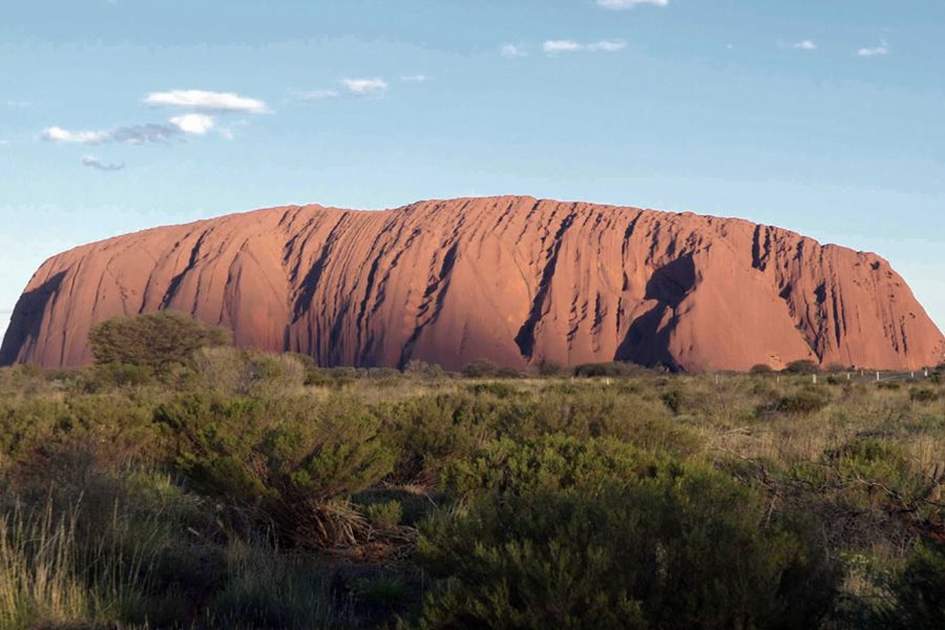October destination of the month: Australia!

Australia is a vast place. The country covers an entire continent of about 7.68 million square km (2.97 million sq miles) – about the same size as the United States excluding Alaska and Hawaii. That’s big enough to have several distinct climates – from cool temperate to monsoonal – and three time zones. The natural landscapes are correspondingly diverse, ranging from red deserts to green rainforests and from sandy beaches to snow-clad mountains. Natural beauty is complemented by sophisticated cities, where all the pleasures of urban life are at hand – usually with beaches and national parks on the doorstep.
Summer is approaching in Australia and where better to enjoy the sun than in the country with the most miles of beach per person in the world? But deciding where to go and what to see in Australia may be the hardest part of the journey. How can you squeeze so much into a limited time? Where to go in such a vast country?
Almost 60 million passengers a year fly Australia’s domestic airline routes. Budget airlines make flying from city to city an affordable option, although it’s best to plan ahead to get the best fares and flight times. Alternatives are slower, but often more revealing: try the transcontinental trains and the long-distance buses, some equipped for luxury travel.
Since you probably can’t see all of it, you’ll have to arrange your tour of Australia to concentrate on seeing a manageable slice or two of the continent. Planning your itinerary requires a compromise involving the time and funds you have available, the season, your special interests and your choice of gateway city. Sydney is the main gateway into Australia, but some airlines allow you to arrive in Cairns, for example, and depart from Sydney or Perth.

Places to visit in Australia
New South Wales
Sydney, with its glorious harbour and the twin icons of the Opera House and the Harbour Bridge, can’t help but dominate New South Wales (NSW), if only because most of the state’s population lives in the capital. However, beyond the metropolis, the state – six times the size of England – is as varied as dairyland and desert or vineyards and craggy mountains.
Canberra
When the new nation was proclaimed at the turn of the 20th century, the perennial power struggle between Sydney and Melbourne reached an awkward deadlock. So they carved out a site in the rolling bush 300km (185 miles) southwest of Sydney, and it soon began to sprout clean, white, official buildings, followed by millions of trees and shrubs. Out of conflict emerged Canberra, a green and pleasant compromise, far from the pressures of the big cities.

Queensland
Queensland provides just about everything that makes Australia so desirable, plus some spectacular exclusives of its own. The sun-soaked state gives you the choice of flashy tourist resorts, remote Outback towns or a modern metropolis in Brisbane; rainforest, desert or apple orchard. But the most amazing attraction of all is Queensland’s offshore wonderland – the longest coral reef in the world, the Great Barrier Reef.

Northern Territory
On the surface, the Northern Territory might seem an unpromising tourist destination. Its deserts, torrid tablelands and monsoonal woodlands may seem uninviting, especially when it’s blazing hot. However, the wildlife is enchanting, the open spaces and big-sky scenery is magnificent, the ancient, sacred site Uluru is spectacular, and the people, though few and far between, welcome the visitor with Outback hospitality and charm.
Western Australia
When it comes to elbow room, the state of Western Australia has no competition. It’s bigger than Texas and Alaska combined and more than 10 times the area of Great Britain. Most of the state’s vast expanse is desert, semi-desert or otherwise difficult terrain. The bulk of the population of 2.3 million has therefore gravitated to the Mediterranean climate found around the beautiful capital city of Perth.

South Australia
South Australia produces more wine than any Australian state, just under half of the nation’s total. The sights of South Australia are as many and varied as its resources: with the rugged grandeur of the Flinders Ranges, the sand dunes of the north, the green banks of the Murray River, and the surf of the Great Australian Bight.
Victoria
About the same size as Great Britain, Victoria is the smallest state on the mainland. Over 70 percent of Victorians live in the capital, Melbourne - famed for its laneways, cosmopolitan café culture and plethora of sporting arenas. The city folk live within easy striking distance of the state’s bushland and 19th-century boomtowns, the sea, the vineyards and the ski slopes. Some of the scenery is so rich and pretty that the state’s first name was Australia Felix – Latin for bountiful or lucky. For tourists, the state’s relatively small size and varied landscapes make for convenient exploration.
Tasmania
Suspended 240km (149 miles) to the south of southernmost mainland Australia, Tasmania is small only by the swollen standards of the continent. With an area of approximately 68,000 sq km (26,250 sq miles), it’s bigger than Sri Lanka or Switzerland. Although snow covers the hills in winter, it’s a verdant island enjoying a temperate climate.
Explore Australia's culture
Read about life in the Australian bush
Visit Melbourne - Australia's food capital
Throughout October, we'll be posting articles on all things Australian; from the country's best beaches and world-famous wineries, to experiencing Aboriginal culture and witnessing unique wildlife.





